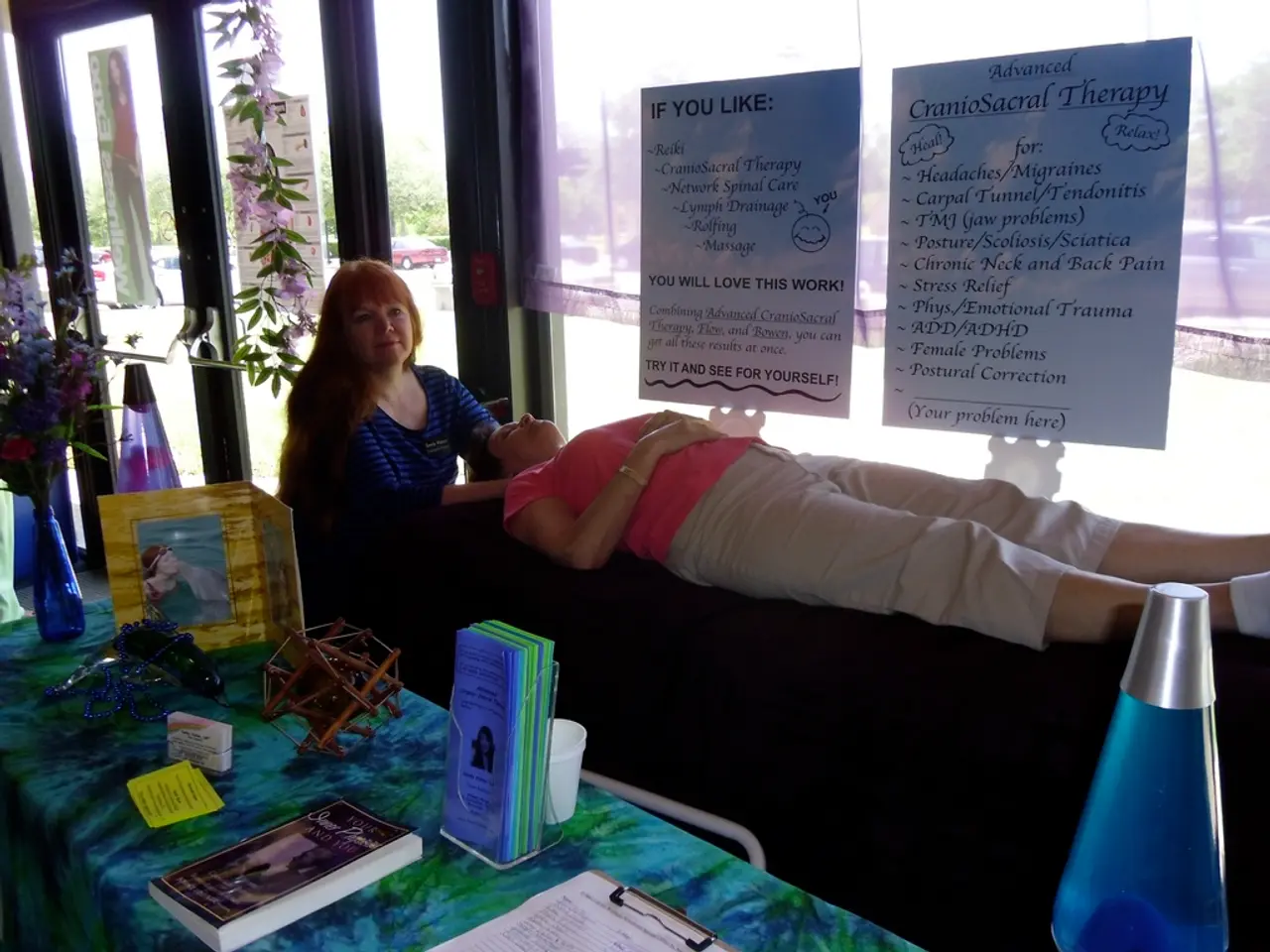Attention Deficit Hyperactivity Disorder (ADHD) and Tics: Possibility of Causal Relationship or Mutual Influence?
Co-occurring ADHD and Tourette's Syndrome: A Complex Relationship
A growing body of research suggests that Attention Deficit Hyperactivity Disorder (ADHD) and Tourette's Syndrome (TS) often coexist, with ADHD being a common comorbid diagnosis in children with TS. This shared occurrence is thought to be due to overlapping neurobiological mechanisms and shared developmental pathways.
ADHD and Tourette's: Shared Neurological Abnormalities
The brain regions involved in motor control, inhibition, and attention, such as the supplementary motor area (SMA) and premotor regions, are hyperconnected and overactivated in both ADHD and TS. These abnormalities play a key role in tic generation and behavioral regulation [1][4].
Compounded Challenges in Children with TS and ADHD
Children with TS and ADHD often face compounded difficulties in attention, impulse control, and behavior, which can exacerbate behavioral challenges and social difficulties [1]. The overlap extends to other comorbidities such as obsessive-compulsive disorder.
Multifaceted Treatment Approach
Treatment for co-occurring ADHD and TS is multifaceted, combining behavioral therapies and cautious pharmacological management that addresses both tic symptoms and ADHD while minimizing adverse interactions [1][2][4].
For ADHD in the context of tic disorders, behavioral interventions, psychoeducation, and when necessary, carefully selected medications that minimize exacerbating tics are often employed. While stimulant medications, commonly used for ADHD, can be used cautiously, alternatives like non-stimulant ADHD medications or other psychotropics may be chosen [1][2].
For TS itself, treatment focuses on tic management through behavioral therapy (such as Comprehensive Behavioral Intervention for Tics - CBIT), and sometimes medications or neuromodulatory approaches targeting the SMA, which has been shown effective in reducing tic frequency [4].
Understanding Tics
Tics, which can be motor (repetitive limb movements) or vocal (grunting or throat clearing), are common in people with ADHD. While tics can be a sign of a disorder, they may also be a temporary experience that resolves after childhood [5].
Seeking Professional Help
A healthcare professional can provide a multimodal treatment plan, which may include medications and behavioral therapies, to help a person manage symptoms of both ADHD and tics. A 2021 study identified certain genes that are common among people with ADHD, TS, obsessive-compulsive disorder (OCD), and autism, further underscoring the complex relationship between these conditions [6].
[1] Kurlan, R. T. (2011). Tourette's Syndrome and Attention Deficit Hyperactivity Disorder. The Journal of Neuropsychiatry and Clinical Neurosciences, 23(4), 368-376.
[2] Stern, J. L., & Jenike, M. A. (2012). Pharmacological treatment of Tourette's disorder and chronic tic disorders. Neurotherapeutics, 9(3), 462-471.
[3] American Academy of Neurology. (2012). Practice parameter update summary: pharmacologic treatment of Tourette syndrome (an evidence-based review): report of the American Academy of Neurology and the Child Neurology Society. Neurology, 79(15), 1437-1442.
[4] Peterson, B. S., & Thiagarajan, M. (2018). The neurobiology of Tourette's syndrome: from genes to circuits. Nature Reviews Neurology, 14(1), 27-39.
[5] Bloch, M. H., & Leckman, J. F. (2012). Transcranial magnetic stimulation in Tourette syndrome: a review. Neurotherapeutics, 9(3), 472-481.
[6] Zhang, Y., et al. (2021). Genome-wide association study of ADHD, Tourette's syndrome, and obsessive-compulsive disorder identifies shared genetic risk loci. Molecular Psychiatry, 26(1), 135-143.
- Neurological research continues to unveil shared abnormalities in the brain regions associated with motor control, inhibition, and attention, such as the supplementary motor area (SMA) and premotor regions, linking Attention Deficit Hyperactivity Disorder (ADHD) and Tourette's Syndrome (TS).
- The complexity in managing co-occurring ADHD and TS necessitates a multifaceted approach, encompassing behavioral therapies, cautious pharmacological management, and nutritional considerations, such as CBD supplementation, while minimizing adverse interactions.
- Science suggests that a multimodal treatment plan, including medications and behavioral therapies, may effectively assist individuals in managing symptoms of both mental health conditions, such as ADHD and tics, or mental-health and neurological-disorders.
- Tics, either motor (limb movements) or vocal (grunting or throat clearing), are often present in people with ADHD, raising questions about their association with these health-and-wellness conditions.
- Research in the field of mental health is progressing, including the discovery of certain genes common to people with ADHD, TS, Obsessive-Compulsive Disorder (OCD), and autism, underscoring the interconnectedness between various mental-health and developmental-conditions.
- A medical professional is equipped to help an individual develop a personalized treatment strategy in addressing co-occurring ADHD and TS, providing therapies-and-treatments to optimize overall health and wellness.




